A presentation is not a story, they are not interchangeable, but you can certainly use lessons from storytelling to make sure that your presentation has an organized narrative and leaves them with the takeaway(s) you want them to hold onto.
Read MoreAs a manager, you can create a predictable and safe environment for those conversations at your regular manager/employee check-ins. Many of us have had these meetings on our calendar but there’s a big difference between a well organized, predictable, thoughtful check-in and the rushed, distracted, “default” check-in. Scheduling the check-in and inviting your employee to meet with you is not enough.
Read MoreTOOL
Being influential is a challenge for many leaders, but particularly when in a team, organization or even just leading a meeting where you’re not the most experienced or lack formal power.
If you’re worried about your ability to influence within a group, there’s a lot you can do to understand the power dynamics and increase the likelihood you’ll feel and show up as powerful and influential.
Read MoreWhen organizing a working group meeting, you may decide that part of the reason for gathering is to collect input and expertise from your members. Remember that giving your participants something to DO is a powerful way to engage them and give them purpose, so don’t hold back. Then, focus on giving your conversation structure so that you can manage the loud voices and democratize the input.
Read MoreIn her book Executive Presence, Sylvia Ann Hewlett describes executive presence as resting on three pillars: gravitas, communication and appearance. As a storytelling and presentation skills coach, I work with clients on all three of these pillars. Here’s my tip: If you’re aiming to develop your executive presence, consider developing your storytelling skills as one way to do so. Here are a few reasons why becoming an intentional storyteller can help build your executive presence.
Stephanie Judd authored this article as a Forbes Council contribution.
Read MoreTOOL
Because working groups are often established to work through aspirational and shifting goals, and because participants are usually loosely organized, it’s critical that participants understand why they’re meeting, what they are expected to contribute, and what they can expect in return. Although you may already have a cursory idea of agenda topics for meetings, getting clear on your “why” will take your meeting from the typical boring event to a powerful gathering with better outcomes.
Read MoreWorking groups are a particularly challenging group to organize and facilitate. Members typically participate in a working group as volunteers, or as an “add on” to their day-to-day jobs. They’re usually made up of members who are more experienced and senior than the person charged with spearheading the group, and the lack of power structure makes accountability to the group a bit thin.
Read MoreLike many event-based learning, there’s always a risk that the skills, knowledge, energy and momentum developed in our workshops may get lost in the mess of daily worklife. We have pre- and post-event activities built into the Influential Storytelling program to help people integrate storytelling directly into their workflow, but there’s always more you can do to make storytelling part of your organizational culture.
Read MoreA key hurdle for leaders stepping into their own leadership is their personal belief that they’re not ready. This article explores Impostor Syndrome, who it affects, and how to combat it effectively: check in with yourself, reframe your thinking, seek outside perspectives, and take a small step.
Read MoreEvery month we host an Ask Me Anything forum where people bring their burning questions about meeting design or facilitation. More often than not, the questions we get can be summed up as, “Why is the meeting so boring? I feel like I’m pulling teeth trying to get people to engage. It just feels like a waste of time.” If you’re in a position where it feels like everything is bad about one of your critical business meetings, start by tackling the agenda.
Read MoreOne of the most powerful things you can do throughout your story—but especially at the beginning—is to use language that allows your listener to visualize what’s happening. When your listener is able to visualize the story, it becomes more experiential to them, it’s easier to follow, it feels more tangible and authentic in its specificity and it’s easier to remember.
When we’re coaching someone to do this, we encourage them to find the scenes, to avoid generalizations, to go beyond the plot and uncover the cinematic potential within their story. Think SHOW, not TELL.
Read MoreThe product management field can be a cutthroat one, and Product Managers know that becoming a more compelling communicator is a great way to differentiate themselves from the pack. But many of these PMs have misconceptions about storytelling. Here are three common storytelling myths held by PMs and why you shouldn’t believe them.
Stephanie Judd authored this article as a Forbes Council contribution.
Read MoreA Parking Lot is a productivity and facilitation meeting tool that captures off-agenda conversation topics and ideas so as to prevent a meeting from veering off course. Items can be added to the Parking Lot and assigned to folks or noted for discussion at a later date.
Read MoreWe’ve all heard the expressions “dress for the job you want, not the job you have” or “look good, feel good” but Stephanie didn’t really believe them. She was conflicted about wanting to look good and feeling guilty about wasting time focusing on “vain” things like clothes and makeup. But, it turns out that research indicates that what we wear affects our brain. It impacts our behavior, mood, personality, confidence, and how we interact with others. Getting dressed is less about what it signals to other people, and more about how it affects yourself.
Read MoreOne of our recent Story Hours focused on the topic of Navigating Conflict: Working through an interpersonal challenge. The imminence of the event inspired Kara to brainstorm story ideas that could fit that subject. Navigating conflict is a guaranteed component of leadership. It comes up all the time in our coaching conversations as our clients navigate conflict with their managers, colleagues and/or direct reports. There’s almost no limit to where it can show up at work and, when it does, it creates a spiraling ball of distraction that saps mental energy, inhibits communication and causes negative feelings all around.
Read MoreWhen brevity is the most important thing, stories may not be the best tool of choice. But when coming across as a compelling and memorable communicator, consider stories—especially ones that lean on specificity—to carry your message.
In our work as storytelling coaches, one of the most common challenges our clients face is bringing their stories down to specifics. Recently, Stephanie had a client, let’s call her Jane, come to her for support in preparing for an interview. Jane knew that she was going to be asked about her origin story. In her case, the question was going to be something along the lines of, “What inspired you to get into the field of Mathematics?” Here’s a rough approximation of the story she started with, and the final version that she landed on. Read on to compare the two to eachother.
Read MoreOne of the most common challenges of sales leaders is enabling their teams to take the demo deck and make it their own—uniquely, authentically and personally theirs. Read this article for some ways you can empower your salespeople to adapt the deck for a more relatable and engaging presentation.
Stephanie Judd authored this article as a Forbes Council contribution.
Read More“Employee engagement” has been a hot-button issue for more than a decade, and remains central to organizational strategy. But engagement is even more important now as companies experiment with hybrid work, or a permanent virtual workforce, and the Great Resignation exists as an ever-present backdrop. And yet, “engagement” remains a big-picture, intangible, and somewhat esoteric idea that has lots of impact on the people within an organization without anyone really understanding what to do about it.
The truth of the matter is that truly engaging your team happens long before the actual moment of reckoning. It’s thinking through details, and finding ways to activate interest and ownership with your employees in every interaction. Here are three common myths about employee engagement and what you can do instead.
Read MoreA request is defined by the Merriam-Webster dictionary as ‘the act or an instance of asking for something’. From a coaching perspective, this definition falls short. A request, in our opinion, is made when we see untapped potential or an opportunity not being fully leveraged within a person. At its core, a request is a gift of possibility available to the person who chooses to receive, unwrap and appreciate the request you have made.
Read MoreIf the COVID-19 pandemic taught us anything, it was that we can engage with each other even if we’re all in different places. As the world re-opens and in-person conferences are restarting, there is an expectation that they will remain accessible to folks who are unable to participate on site. And yet, early attempts to build meaningful hybrid conference experiences have shown us that we’re playing in a whole new league now. Hybrid experiences aren’t in-person or virtual experiences. They’re something altogether different. We still have a lot to learn, and it’s easy to execute hybrid conferences poorly.
Read More



















